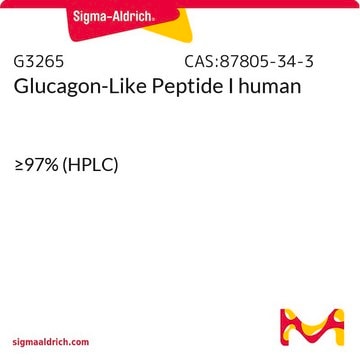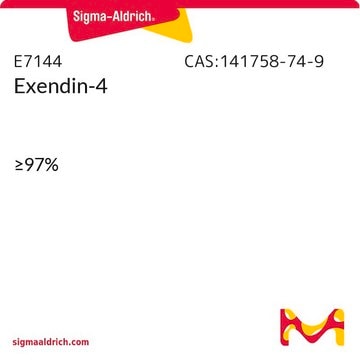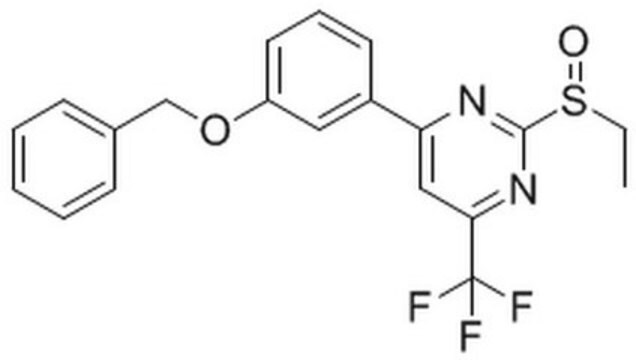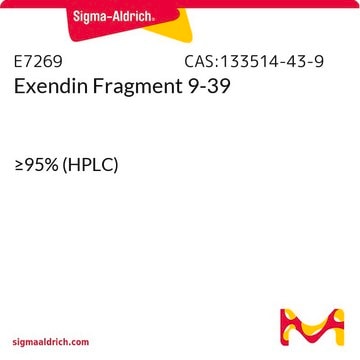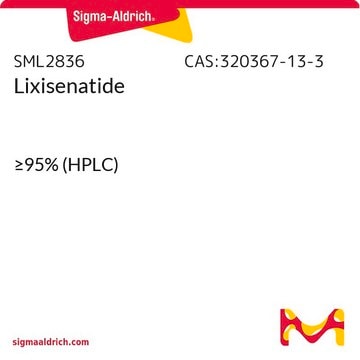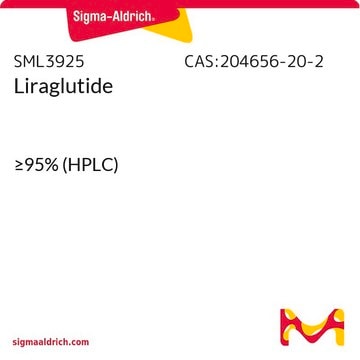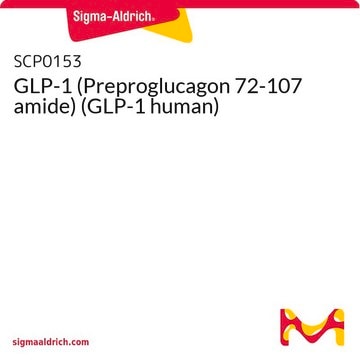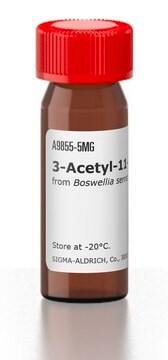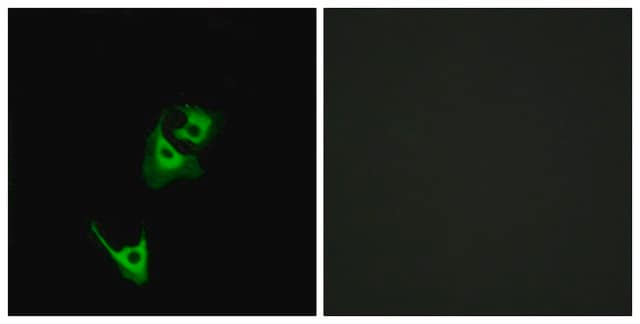This product has not been studied in-house for in vivo applications. Please refer to published literature for relevant citations regarding its use in murine models.
G8048
GLP-1R agonist
≥98% (HPLC), powder, glucose homeostasis regulator
Synonym(s):
2-Quinoxalinamine, 6,7-dichloro-N-(1,1-dimethylethyl)-3-(methylsulfonyl)-, 6,7-dichloro-2-methylsulfonyl-3-N-tert-butylaminoquinoxaline (DMB), Compound 2
Select a Size
Select a Size
About This Item
Recommended Products
Product Name
GLP-1R agonist, ≥98% (HPLC)
Quality Level
Assay
≥98% (HPLC)
form
powder
storage condition
desiccated
color
light brown-yellow
solubility
DMSO: ≥10 mg/mL
storage temp.
2-8°C
SMILES string
[S](=O)(=O)(C)c1nc2c(nc1NC(C)(C)C)cc(c(c2)Cl)Cl
InChI
1S/C13H15Cl2N3O2S/c1-13(2,3)18-11-12(21(4,19)20)17-10-6-8(15)7(14)5-9(10)16-11/h5-6H,1-4H3,(H,16,18)
InChI key
GNZCSGYHILBXLL-UHFFFAOYSA-N
General description
Biochem/physiol Actions
Storage Class Code
11 - Combustible Solids
WGK
WGK 3
Flash Point(F)
Not applicable
Flash Point(C)
Not applicable
Choose from one of the most recent versions:
Certificates of Analysis (COA)
Don't see the Right Version?
If you require a particular version, you can look up a specific certificate by the Lot or Batch number.
Already Own This Product?
Find documentation for the products that you have recently purchased in the Document Library.
Customers Also Viewed
-
Is it possible to resuspend the aginist in DMSO and then dilute it in PBS without causing precipitation or affecting its solubility, with the goal of injecting it into a murine ?model
1 answer-
Helpful?
-
-
What is the mechanism of action for this compound? Additionally, is the structural information available for this compound?
What is the mechanism of action for this compound? Additionally, is the structural information available for this compound?
1 answer-
The compound known as compound 2 was discovered through functional screening, demonstrating that it enhances the binding of GLP-1 to the receptor rather than competing with it. It functions as an ago-allosteric modulator, acting as both an agonist and an allosteric modulator. This compound is specific to the GLP-1 receptor and induces insulin release from wild-type mouse islets, as detailed in a specific article. For information on the structure of compound 2, please refer to Figure 2 in the publication "Proc Natl Acad Sci U S A. 2007 Jan 16; 104(3): 937–942." The PMID for the article is 17213325, and it can be accessed at https://www.ncbi.nlm.nih.gov/pmc/articles/PMC1783418/.
Helpful?
-
-
What is the molecular weight of GLP1 agonist 8048 in grams ?
1 answer-
The molecular weight of this product is 348.25. This value can be interpreted in units of daltons or grams per mole.
Helpful?
-
Active Filters
Our team of scientists has experience in all areas of research including Life Science, Material Science, Chemical Synthesis, Chromatography, Analytical and many others.
Contact Technical Service